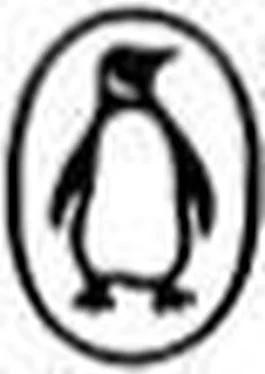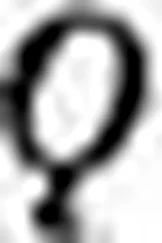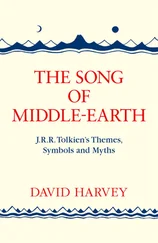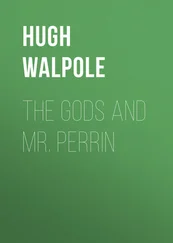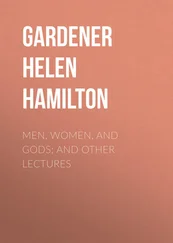Davidson, H. - Gods and Myths of Northern Europe
Здесь есть возможность читать онлайн «Davidson, H. - Gods and Myths of Northern Europe» весь текст электронной книги совершенно бесплатно (целиком полную версию без сокращений). В некоторых случаях можно слушать аудио, скачать через торрент в формате fb2 и присутствует краткое содержание. Жанр: Старинная литература, на английском языке. Описание произведения, (предисловие) а так же отзывы посетителей доступны на портале библиотеки ЛибКат.
- Название:Gods and Myths of Northern Europe
- Автор:
- Жанр:
- Год:неизвестен
- ISBN:нет данных
- Рейтинг книги:5 / 5. Голосов: 1
-
Избранное:Добавить в избранное
- Отзывы:
-
Ваша оценка:
- 100
- 1
- 2
- 3
- 4
- 5
Gods and Myths of Northern Europe: краткое содержание, описание и аннотация
Предлагаем к чтению аннотацию, описание, краткое содержание или предисловие (зависит от того, что написал сам автор книги «Gods and Myths of Northern Europe»). Если вы не нашли необходимую информацию о книге — напишите в комментариях, мы постараемся отыскать её.
Gods and Myths of Northern Europe — читать онлайн бесплатно полную книгу (весь текст) целиком
Ниже представлен текст книги, разбитый по страницам. Система сохранения места последней прочитанной страницы, позволяет с удобством читать онлайн бесплатно книгу «Gods and Myths of Northern Europe», без необходимости каждый раз заново искать на чём Вы остановились. Поставьте закладку, и сможете в любой момент перейти на страницу, на которой закончили чтение.
Интервал:
Закладка:
The bitterness against the god expressed in this story might be attributed to Saxo the Christian scholar if it stood alone, but it can be matched from many other sources. A fine tenth-century poem, Hákonarmál , composed at the death of Hakon the Good of Norway, describes him entering the courts of Odin. He is received with much honour, but his response is a cold one:
Surely we have deserved victory of the gods… Odin has shown great enmity towards us… We will keep our war-gear ready to hand.
The implication is clear: Odin cannot be trusted. This is expressed with even greater freedom in later poetry and by the prose writers:
You have never been able to order the course of war; often have you given victory to cowards who did not deserve it.
Lokasenna
Balder’s father has broken faith – it is unsafe to trust him. …
Ketils Saga Hœngs
I suspect indeed that it is Odin who comes against us here, the foul and untrue. …
Hrólfs Saga Kraka
Phrases such as this suggest widespread indignation against the treachery of the god. Perhaps it is not too fanciful to catch the same note in the protest of a high priest of the gods at the court of King Edwin of Northumbria in the seventh century, recorded by Bede in his Ecclesiastical History of the English Nation (11, 13) less than a century later. Coifi the priest declared that the old religion offered no reward for true and faithful service, and another unnamed speaker in the debate added that heathen men were left with nothing in which they could trust once their earthly life was over. It seems likely that Coifi the priest was the servant of the God of Battle, since his method of destroying and repudiating the temple of the gods was to hurl a spear at it and then to commit it to the flames. This is in accordance with what we know of the sacrificial rites associated with Odin himself.
In Old Norse literature the rites said to belong to Odin are dedication by a spear, hanging, and burning. Snorri tells us in Ynglinga Saga that marking with a spear at the time of death and burning of the dead were practices followed by the Swedish worshippers of Odin, and that they claimed to be following their god’s own example. According to the poem Hávamál (Utterance of the High One), Odin himself recounts how he was pierced with a spear and hanged on a tree, a sacrifice for the attainment of wisdom (see pp. 143–4). We have independent evidence for the sacrifice of men and beasts by hanging as late as the eleventh century in Sweden. In his history of the Archbishops of Hamburg-Bremen, 1Adam of Bremen gives a grim picture of the bodies of men and animals left hanging from trees round the great heathen temple at Uppsala, when a special festival to the gods was held every nine years. He gives as the source of his information a Christian friend of his, an old man of seventy-two, who had told him that he had seen these sacrifices hanging there. Whether this hanging was preceded by the stabbing of the victim with a spear we do not know. Captives in war were also liable to be put to death by hanging, presumably as a sacrifice to the war god. Procopius, writing in the early sixth century, says of the men of Thule, that is, of Norway and Sweden:
… the sacrifice most valued… is that of the first man which they capture in war. This sacrifice they offer to Ares, since they believe him to be the greatest of the gods. They sacrifice the prisoner not merely by slaughtering him, but by hanging him from a beam, or casting him among thorns, or putting him to death by other horrible methods.
Gothic War , 11, 15
Again in Beowulf it is noticeable that the king of the Swedes threatens to hang his enemies the Geats after the Battle of Ravenswood ‘some of them on the gallows-tree, as sport for the birds’ (2940–1). 2
An account of a sacrifice to Odin by hanging is given in one of the late sagas, Gautreks Saga . This has so convincing a ring that in spite of its late date it may be based on memories of the traditional sacrificial cult of the god. According to this story, a Viking leader, King Vikar, prayed to Odin for a favourable wind, and when lots were drawn to decide who should be given to Odin in return for this, it fell upon the king himself. In this embarrassing situation his men decided to stage a mock sacrifice. Vikar was to stand on a tree-stump with a calf’s intestines looped round his neck and fastened to the tree above. Starkad, a famous hero and follower of Odin, was to stand beside him with a long rod in his hand. He thrust this rod at the king, uttering the words, ‘Now I give thee to Odin’. At this moment a deadly substitution took place, and the ritual became reality:
He let the fir bough go. The rod became a spear, and pierced the king through. The stump fell from under his feet, and the calf’s intestines became a strong rope, while the branch shot up and lifted the king among the boughs, and there he died.
Gautreks Saga , 7
Here noose and spear are used together in a ritual killing. Among the many titles of Odin, it is noticeable that we find Spear-Brandisher, and God of Hanged Men.
Snorri also emphasized the importance attributed to the burning of the dead among the followers of Odin. All objects burned on the pyre with their owners were deemed to pass with them to Valhalla, he tells us. The double ritual of hanging and stabbing is accompanied by burning in a tenth-century account of a sacrifice held on the Volga, among the Swedish settlers there. It was witnessed by Ibn Fadlan, an Arab traveller, who left a detailed account of what he saw, 1and he tells how a slave-girl was sacrificed at the funeral of her master. She was strangled and stabbed at the same time by an old woman called the Angel of Death and her helpers, and the girl’s body was then burned beside that of her master on a great pyre formed of a blazing ship. The importance of the burning is emphasized by the words of one of the bystanders, who as the flames mounted high declared that his lord had sent a wind to bear the dead man to paradise because of his love for him. This is fully in accord with what Snorri has to say concerning the funeral rites of Odin.
The words spoken by Starkad at the sacrifice of King Vikar, ‘Now I give thee to Odin’, are echoed elsewhere. They could be spoken over an enemy host dedicated to the god, as a spear was flung over them. In the Battle of Fyrisvellir, fought in 960 between the Swedish king Eric and Styrbiorn the Strong, Eric is said to have performed this rite and to have won the victory with the help of Odin. Styrbiorn, according to the story told in Flateyjarbók , had prayed to Thor for help, but Eric vowed a sacrifice to Odin:
Eric dedicated himself to him for victory, and offered to die at the end of ten years. He had already made many sacrifices, since he seemed likely to get the worst of it. Not long afterwards he saw a tall man with a hood over his face. He gave Eric a thin stick, and told him to shoot it over the host of Styrbiorn and to say, ‘Odin has you all’.
Now when he had shot it, it appeared to him like a javelin in the air, and it flew over Styrbiorn’s host. Immediately blindness fell upon Styrbiorn’s men and then upon Styrbiorn himself. Then a great wonder came to pass, for an avalanche broke loose on the mountain and fell upon Styrbiorn’s host, and all his people were slain.
Flateyjarbók , 11, 61
This practice of hurling a spear was remembered by the composer of Eyrbyggja Saga (44). He tells how an Icelander did this over a band of his enemies before a fight ‘according to ancient custom, to bring them good luck’, although Odin is not mentioned. In the poem on the Battle of the Goths and Huns (recorded in a late saga, but believed to contain early traditions), there is an allusion to the spear of Odin which will decide the course of battle. The challenge from the Goths to the Huns ends with the invocation:
Читать дальшеИнтервал:
Закладка:
Похожие книги на «Gods and Myths of Northern Europe»
Представляем Вашему вниманию похожие книги на «Gods and Myths of Northern Europe» списком для выбора. Мы отобрали схожую по названию и смыслу литературу в надежде предоставить читателям больше вариантов отыскать новые, интересные, ещё непрочитанные произведения.
Обсуждение, отзывы о книге «Gods and Myths of Northern Europe» и просто собственные мнения читателей. Оставьте ваши комментарии, напишите, что Вы думаете о произведении, его смысле или главных героях. Укажите что конкретно понравилось, а что нет, и почему Вы так считаете.
